Name:Espace Mendès France
Address:1 place de la Cathedrale, 86000 Poitiers
Related Site : https://emf.fr/
On the banks of the Clain River, in the Poitou-Charentes region, Poitiers is a city with important historical heritage, with a history dating back to ancient times. Three courses, each with a color, allow the discovery of this heritage by strolling through the streets. All start at Place Charles de Gaulle, right in the center of the city, and you have to follow the associated colored bands painted on the ground to make a complete visit of the old center, the Spur. The different courses will lead to the discovery of Notre-Dame-La-Grande, a masterpiece of Romanesque architecture, the Palace of the Dukes of Aquitaine and its impressive dimensions, or to visit the Sainte-Croix museum, devoted to archaeology and the fine arts.
table of contents
[x] close
Poitiers : The Land of Serenity and Great History
- 1. Espace Mendès France
- 2. Palace of the Dukes of Aquitaine
- 3. Notre Dame La-Grande
- 4. Moulière forest
- 5. University of Poitiers, Médiathèque F. Mitterand
- 6. Sainte-Croix Museum
- 7. The banks of the Clain
- 8. Caves of the Norée, Biard
- 9. Baptistery of Saint John
- 10. Palace of Justice of Poitiers
- ◎ Closing
1. Espace Mendès France
Espace Mendes France is the second cultural establishment in Poitiers. It is a friendly place located in the heart of the episcopal district of Poitiers. It hosts exhibitions, conferences, events, training, shows, etc. In Charentes, the center is co-organizing, with scientific actors, economic, cultural and social, many actions of scientific and cultural mediation. In particular, it coordinates La Fête de la science in the region.
2. Palace of the Dukes of Aquitaine
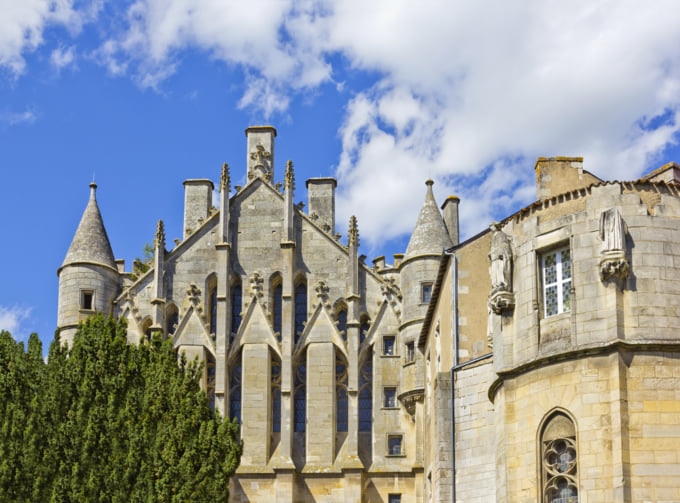
Photo by Walencienne/shutterstock.com
The history of Poitiers dates back to antiquity, but the city has been known for its most energetic radiation in the Middle Ages. Witness of this time, the Palace of the Dukes of Aquitaine was erected from the twelfth century in a high point overlooking the city, on the foundations of ancient fortifications: Gallo-Roman remains have been found at the foot of the tower Maubergeon rectangular dungeon with four round towers to each of its angles, which was then the residence of the Counts of Poitou-dukes of Aquitaine. It was around 1200 that Alienor Aquitaine ordered the development of the current "Salle des Pas Perdus", Plantagenet style. With its impressive dimensions for the time, with its 50 meters in length and 17 meters in width, this room was considered the largest in Europe.
Name:Palace of the Dukes of Aquitaine
Address:Palace of the Dukes of Aquitaine, 86000 Poitiers
3. Notre Dame La-Grande
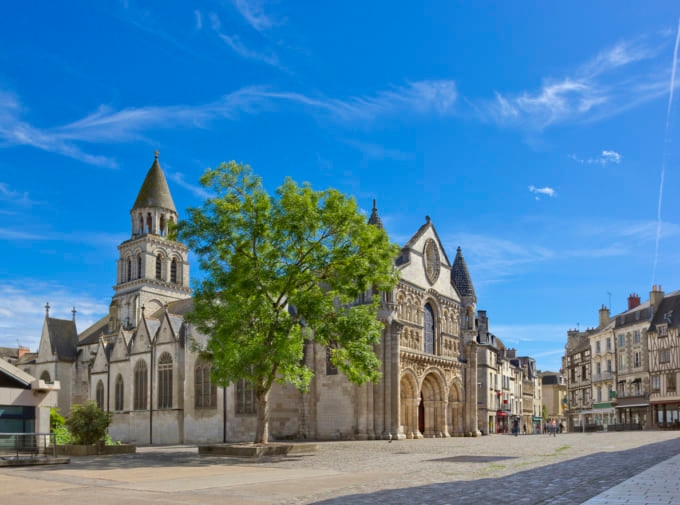
In the heart of Poitiers city center, the imposing Notre-Dame-La-Grande, considered as one of the masterpieces of Romanesque architecture, an architectural style is very common in the region. This church particularly impresses for its facade of the twelfth century: richly ornamented, this facade traces the entire history of the Bible, from Adam and Eve to the glory of Christ, at the top of a real story carved in stone.
Name:Notre Dame La-Grande
Address:Place Charles de Gaulle, 86000 Poitiers
4. Moulière forest
The Moulière forest is located less than ten kilometers north-east of Poitiers: this natural ensemble occupies 6800 hectares of surface, covering nine communes. The public part of the forest, open to the public, comprises 4171 hectares of unspoiled nature of development or construction. The rich flora of Moulière will delight nature lovers: in the middle of the many oaks and conifers, including Scots pines and maritime introduced in the 60s, it will be necessary to remain attentive to the rarer species that you can meet here: different species orchids grow in the undergrowth, especially in the spring.
Name:Moulière forest
Address:Poitiers, France
5. University of Poitiers, Médiathèque F. Mitterand
Poitiers is, with La Rochelle, the largest university hub in the Poitou-Charentes region: the influx of student population gives animation to the city. One of the university's sites is located in the city center, near Notre-Dame-La-Grande. The history of this university goes back to the 15th century since it was founded after the authorization of Pope Eugene IV in 1431, and under the impetus of the will of King Charles VII.
Name:University of Poitiers, Médiathèque F. Mitterand
Address:4 Rue de l'Université, 86000 Poitiers, France
6. Sainte-Croix Museum
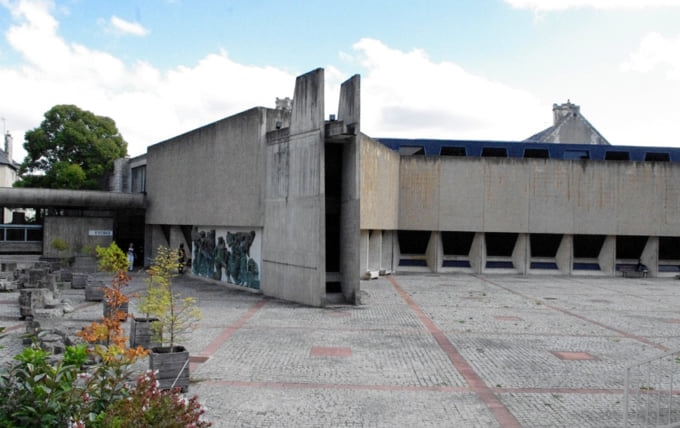
Photo by commons.wikimedia.org
The Sainte-Croix de Poitiers museum is one of the most important museums in the Poitou-Charentes region. Located near the Saint-Pierre Cathedral, rue Jean-Jaurès, the collections are housed in an original building (the 1970's) at the place where stood in his time the Sainte-Croix Abbey. On three levels spanning nearly 4500 m², the museum is devoted to archaeology and the fine arts.
Name:Sainte-Croix Museum
Address:3 bis rue Jean Jaurès, 86000 Poitiers
Related Site : https://www.poitiers.fr/c__231_977__Accueil_musee_Sainte_Croix.html
7. The banks of the Clain
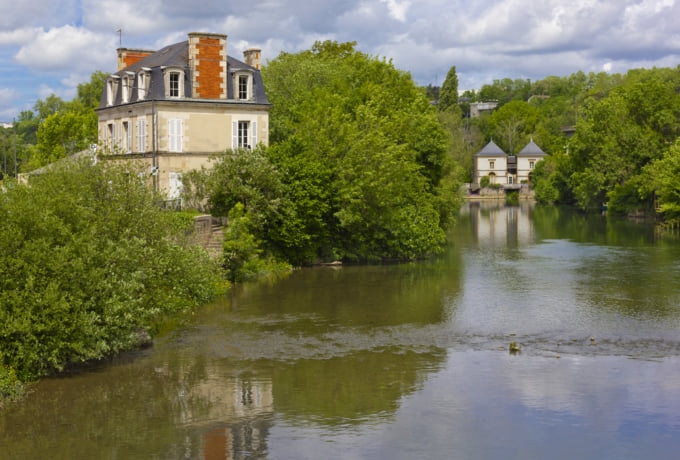
Photo by Walencienne/shutterstock.com
The Clain is a river of average importance, which has however contributed to the prosperity of Poitiers since the beginnings of a city have been built on its shores since ancient times. The main tributary of the Vienne, in which it flows at the level of Châtelleraud, the Clain, whose course continuously digs to be encumbered in the limestone plateau, knows massive floods during periods of heavy precipitation. But most of the time the banks of the Clain through Poitiers are an excellent green walk along the stream, on foot or by bike.
Name:The banks of the Clain
Address:86000 Poitiers
Related Site:http://poitiers.greeters.online/project/banks-clain-river/?lang=en
8. Caves of the Norée, Biard
A few kilometers southeast of Poitiers, located in the town of Biard, the caves of the Norée are a site classified since 1934. Biard is located in the heart of the Boivre Valley, a protected natural area (listed in the Urban Natural Park) crossed many walking tours to go hiking or biking for the discovery of a preserved nature, landscapes ranging from limestone cliffs to wetlands. The Norée caves are the only ones of this type open to the public in the region: this natural formation is estimated Middle Jurassic (about 170 million years).
Name:Caves of the Norée, Biard
Address:2 rue de l'Ermitage, 86580 Biard
Related Site:https://www.grandpoitiers.fr/c__285_1367__Grottes_de_la_Noree.html
9. Baptistery of Saint John
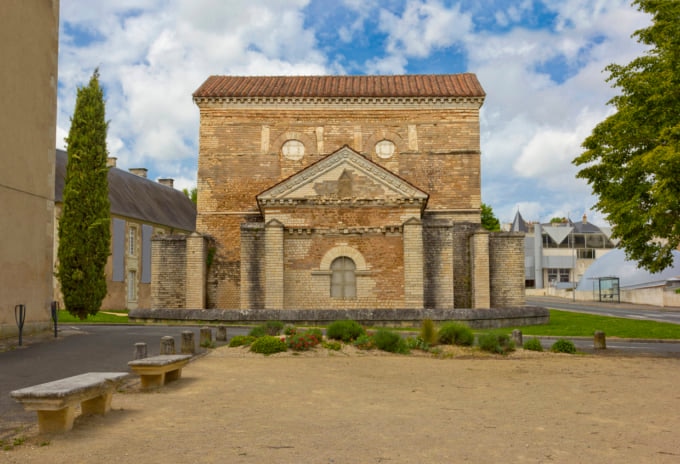
Built in its first form, around 360, the baptistery Saint John of Poitiers is one of the oldest Christian monuments in France still standing. It has, however, been greatly modified afterwards, and most of the building that has survived belongs to the 8th-9th centuries, which remains very old, you will agree. It is a building with a Latin cross plan, built in small apparatus, and whose walls are decorated, on the outside, with pilasters supporting applied pediments. The interior has preserved interesting wall paintings of the eleventh and twelfth centuries.
Name:Baptistery of Saint John
Address:Rue Jean-Jaurès, 86000 Poitiers,
10. Palace of Justice of Poitiers
From the first palace of Poitiers, built for Louis the Pious and destroyed by a fire in 1018, nothing remains. The second, made by William IX at the beginning of the twelfth century, only remains part of the dungeon, the rest having disappeared in a fire in 1346. In fact, most of the Palais de Justice in Poitiers is the result of the third campaign of construction, which led by Guy de Dammartin for Jean de Berry between 1388 and 1416. He built, in particular, the great hall of the palace, ended by a triple fireplace decorated with sculptures representing, in particular, the Duke and his wife, Jeanne de Boulogne.
Name:Palace of Justice of Poitiers
Address:Place Alphonse Petit, 86000 Poitiers
◎ Closing
"Back to the future", this could be the challenge for the capital of Poitou which has its place in the history books deservedly. The Futuroscope would almost steal the show, but the city has decided to equip itself with essential equipment and highlight its old neighborhoods, often pedestrian streets sloping with Romanesque churches.
RELATED ARTICLES
REGIONS
CATEGORIES
FEATURED ON France
-

Introducing All 5 World Heritage Sites in Slovenia! Explore the Magnificent World Heritage of This Small Country
-

There are so many stylish items! Let me introduce you to Paris souvenirs that are a joy to receive
-

[World Heritage] What is Chartres Cathedral? A world of light France is proud of
-

Hometown of King Henry IV of France! 4 sightseeing spots in Pau overlooking the Pyrenees Mountains
-

[World Heritage] Introducing the Palace of Versailles ◎ The garden built by a king’s stubborn will!?
MOST POPULAR ON France
-
 1
1Doha: Must-see Attractions in the Capital of Qatar
-
 2
2Toronto: 10 Things to do in this Picturesque Canadian City
-
 3
3Amarillo: A City Famous for It’s Amazing Canyons, Great History and Music
-
 4
4South Korea: Dazzling Scenery, Rich Culture and Fascinating History
-
 5
5Kuwait: A Country in Middle East Asia Famous for Hot Sand Dunes and Stunning Cityscape





